After a delay in North Carolina’s mail-in ballots, military and overseas ballots are set to go out Friday, September 20th, with civilian ballots to be sent out next Tuesday, September 24th. As of September 17th, there are 187,178 mail-in ballot requests throughout North Carolina, of which roughly 14,000 are military and overseas ballots going out Friday.
Much like in 2022, The total mail-in ballot requests seem to be finding a middle ground between the 2020 pandemic election and what we saw in years prior. The volume is more than three times that of the 2016 election but only 18% of the 2020 election request numbers.

Source: NCSBE Absentee-by-Mail Request Stats as of 9/18/2024
The growth between 2016 and 2024 favors Democrats, but they don’t have the advantage that they had over Republicans in 2020. Both Democrats and unaffiliated voters have seen an increase of over three times the number of requests that they had at this time in 2016, while Republicans have only seen their requests double.
The advantage Democrats had at this time in 2020, with nearly 50% of all ballot mail-in ballot requests, carried over to the 2022 election, with them holding almost 54%. This year, Democrats do not have as large of an advantage as they had in previous years, with them now holding only 38% of the mail-in ballot requests.
While Republicans don’t hold as large of a percentage of mail-in ballots as they did in 2016, where they had more than a third of requests, they are doing significantly better than the 18% they were at in 2020.
Demographic Data
While we can easily compare party mail-in ballot request data by party and county for the last two presidential elections, the NCSBE does not share further demographic data for mail-in ballot request data before the 2020 election. We can analyze the breakdown of the demographics of age, party, and gender from 2020 and 2022 to see how the mail-in ballot requests have changed across demographics.
Because the demographic data is only broken down by week, all analysis is based on “week 37” data of each election year. We are in the middle of week 38, so this data accounts for the latest full week available for all three elections.
The spreadsheet for the combined data can be found here: https://www.johnlocke.org/wp-content/uploads/2024/09/Mail-in-Ballot-Requests-Comparison-up-to-voting-week-37.xlsx
Gender
When it comes to gender, the NCSBE has three different categories: male, female, and undesignated. The breakdown has been fairly consistent over the last three elections; women have held around 55% of all absentee ballot requests, while men have trended slightly downward from 39% to 37%. Undesignated has trended upward from 6% to 9%.
While Democratic women are still the most likely group to request an absentee ballot, their percentage of total ballots and percentage among women has declined.

Democratic men saw a similar decline in their percentage within the male sub-group. Both Democratic men and women have only seen a roughly 80 percent increase from the 2022 midterm election, while Republican men and women have exceeded their mail-in ballot request numbers by more than four times that of 2022, with men slightly outperforming women’s increase. Unaffiliated voters saw an increase of nearly three times their requests from 2022, with unaffiliated women outperforming their male counterparts.
Age Ranges
Like other aspects of voter participation, in terms of age, the majority of mail-in ballot requests come from older voters. Voters over 65 are the largest bracket of voters, followed closely by those 41 to 65 during presidential elections.
While this is common, there is significant growth in the 18-25 age range. While they only made up 7% and 8% of all mail-in ballot requests during 2020 and 2022, respectively, they are currently sitting at 15% of all requests this year.

While youth voters are still the smallest group to request a ballot, the quintupling of their 2022 request rates has put them only just behind the 26-40 age bracket. The growth in total requests is seen across all party lines with 18–25-year-olds, with the most significant percentage being unaffiliated voters at 7% this year.
We will be tracking the mail-in ballot requests and returns as they start coming in next week. All the mail-in data we are pulling can be found on the NCSBE website.
